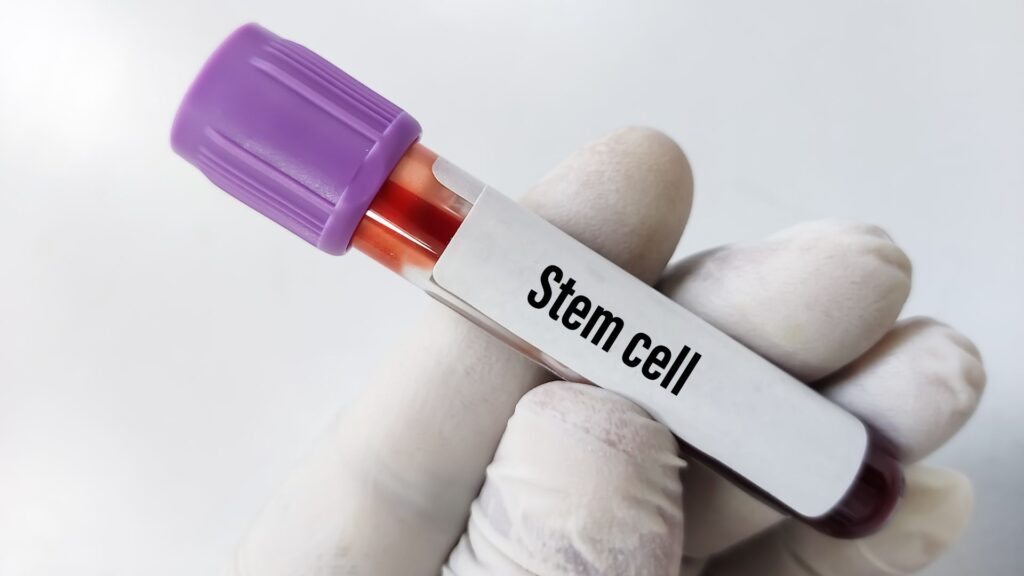
What Is Is Stem Cell Therapy Covered by Insurance and How Does It Work?
The phrase “is stem cell therapy covered by insurance” refers to the question of whether health insurance providers will reimburse or pay for stem cell treatments. In most countries, including the U.S., Canada, and much of Europe, insurance coverage for stem cell therapy is generally limited to procedures that are FDA-approved or included in standard medical guidelines—such as bone marrow transplants for certain cancers or blood disorders.
For other uses, like regenerative treatment for arthritis, back pain, neurological disorders, or sports injuries, coverage is typically denied because these applications are still considered investigational or not yet approved by major regulatory bodies. That means patients seeking mesenchymal stem cell (MSC) therapy for degenerative or inflammatory conditions are often responsible for paying out-of-pocket.
Stem cell therapy itself works by harnessing the regenerative power of MSCs—particularly those from Wharton’s jelly and placental tissue—to repair damaged cells, modulate immune response, and reduce inflammation. At Regenamex, MSCs are administered either through targeted injections or intravenous (IV) infusions, depending on the patient’s needs. Once in the body, these cells release bioactive molecules and growth factors that stimulate tissue regeneration and promote healing from within.
Who Benefits from Is Stem Cell Therapy Covered by Insurance?

While most insurance policies do not currently cover regenerative therapies for orthopedic, autoimmune, or neurological conditions, the question “is stem cell therapy covered by insurance” is especially relevant for people who could significantly benefit from the procedure. These include:
Individuals with degenerative joint diseases such as osteoarthritis of the knee, hip, or shoulder
Patients with chronic back or neck pain caused by herniated discs or degenerative disc disease
Those with autoimmune disorders like lupus, multiple sclerosis, or rheumatoid arthritis
People recovering from sports injuries including tendon tears or cartilage damage
Older adults experiencing mobility issues from age-related tissue degeneration
Patients seeking alternatives to surgery for orthopedic or spine conditions
For these individuals, stem cell therapy offers a non-invasive option that targets the underlying damage rather than simply masking symptoms. While insurance limitations can be frustrating, clinics like Regenamex in Mexico provide an affordable path to care that meets international safety and quality standards.
Results You Can Expect with Is Stem Cell Therapy Covered by Insurance

Patients considering the financial side of treatment often also want to know about expected outcomes. The regenerative effects of MSC therapy develop gradually as the body incorporates and responds to the stem cells.
Weeks 1–3:
Mild soreness near the injection site may occur briefly
Early reduction in inflammation and stiffness
Improved comfort during daily activities
Weeks 4–8:
Noticeable reduction in pain levels
Increased joint mobility and flexibility
Enhanced ability to perform physical activities without discomfort
3–6 months:
Continued tissue regeneration and repair
Long-term pain relief and improved structural support
Reduced reliance on pain medications
While insurance may not cover the cost, the results often make the investment worthwhile. Clinical observations and patient experiences at Regenamex have shown lasting improvements in quality of life, even in cases where other treatments have failed. You can see examples of real patient outcomes on our results page.
Why Mesenchymal Stem Cells from Wharton’s Jelly?

The type of stem cells used plays a major role in both effectiveness and safety. At Regenamex, we exclusively use mesenchymal stem cells derived from Wharton’s jelly and placental tissue for regenerative therapies. These cells offer several key advantages:
High Potency: Wharton’s jelly MSCs are young, highly active, and capable of rapid regeneration.
Immunomodulation: They calm overactive immune responses, reducing inflammation in damaged tissues.
No Age-Related Decline: Unlike adipose or bone marrow-derived cells, their potency is unaffected by the donor’s age or health.
Ethical Sourcing: All cells are obtained from full-term, healthy births with informed parental consent, posing no risk to mother or child.
Safety Profile: Wharton’s jelly MSCs are immune-privileged and carry no tumor formation risk, unlike embryonic stem cells.
We do not use adipose or bone marrow-derived cells because they may be less effective due to age-related deterioration and lower regenerative capacity. For more information about the science behind MSC therapy, you can review studies on PubMed.
How the Treatment Is Performed
For patients researching is stem cell therapy covered by insurance, understanding the process is just as important as understanding the financial side. At Regenamex, every treatment begins with a comprehensive consultation, including a review of medical history and diagnostic imaging to identify the source of damage.
Treatment Overview:
| Step | Detail |
|---|---|
| Stem Cell Count | 1–5 million MSCs per kg of body weight |
| Administration | Targeted local injection, intravenous infusion, or both |
| Procedure Duration | 1–2 hours |
| Total Visit | 3–5 days, including evaluation and post-care |
| Recovery | Avoid strenuous activity for 2 weeks; light movement encouraged |
All procedures are image-guided for precision, and patients receive ongoing monitoring to ensure safety and optimal results. Learn more about our process on the stem cell treatment process page.
Why Patients Choose Regenamex for Is Stem Cell Therapy Covered by Insurance
When insurance coverage is not available, patients need a provider they can trust for safe, affordable care. Regenamex is a licensed regenerative medicine clinic in Mexico that attracts patients from the U.S., Canada, and beyond for its high standards and competitive pricing.
Why Regenamex Stands Out:
Fully licensed and compliant with Mexican health regulations
Exclusive use of Wharton’s jelly & placental MSCs—never adipose or bone marrow
Personalized protocols based on each patient’s condition and goals
Pricing from $2,500 to $12,000 USD depending on treatment requirements
Concierge travel and recovery support for international patients
Ethical sourcing and world-class laboratory processing
You can learn more about why patients choose us on the Regenamex Stem Cell Therapy Mexico page.
Frequently Asked Questions About Is Stem Cell Therapy Covered by Insurance
The question “is stem cell therapy covered by insurance” refers to whether a patient’s health insurance provider will agree to pay, either fully or partially, for stem cell treatments. In the United States and many other countries, insurance coverage for regenerative medicine is generally limited to well-established, FDA-approved uses such as bone marrow transplants for certain cancers or blood disorders. This means that the more modern applications of stem cell therapy—like treating arthritis, chronic back pain, sports injuries, or autoimmune diseases—are usually considered elective or investigational by insurers. As a result, patients often need to pay for these treatments out-of-pocket.
The therapy itself involves using mesenchymal stem cells (MSCs), such as those from Wharton’s jelly and placental tissue, to encourage the repair of damaged tissues, reduce inflammation, and improve function in targeted areas. These cells are introduced into the body either through local injections or intravenous infusions. Once administered, MSCs release powerful growth factors and cytokines that trigger the body’s natural healing processes, offering long-term potential for tissue regeneration and pain relief.
For patients dealing with degenerative conditions like chronic back pain or osteoarthritis, the question of insurance coverage for stem cell therapy is particularly important. Unfortunately, most insurance companies still classify regenerative treatments for these conditions as “experimental” or “not medically necessary.” This classification is due to the fact that, while research strongly supports the potential of stem cells in orthopedic and pain management settings, many of these applications have not yet completed the rigorous, multi-phase regulatory approval process that insurers require.
As a result, patients seeking relief from herniated discs, degenerative disc disease, or joint degeneration typically cannot rely on their insurance to pay for the procedure. Instead, they often pay privately or seek more affordable treatment options abroad—such as at Regenamex in Mexico, where high-quality MSC therapy is offered at a fraction of the cost charged in the United States or Canada.
The cost of stem cell therapy without insurance varies widely based on the clinic, the condition being treated, and the amount and source of stem cells used. At Regenamex, pricing for treatment typically ranges between $2,500 and $12,000 USD. Factors influencing this range include the severity of the condition, the number of joints or body regions being treated, and the delivery method—whether by local injection, intravenous infusion, or both.
Unlike in some countries where prices for regenerative therapy can exceed $20,000, Regenamex offers a transparent, all-inclusive cost structure that covers medical evaluations, laboratory processing of the cells, administration of the therapy, and post-care guidance. For many patients, traveling to Mexico for treatment not only makes therapy financially possible but also ensures they receive care from a licensed clinic specializing exclusively in Wharton’s jelly MSCs.
The primary reason most insurers do not cover regenerative therapies like MSC treatment for orthopedic or autoimmune conditions is that these uses have not yet been approved by regulatory bodies such as the U.S. Food and Drug Administration (FDA) for general clinical application. While there is a growing body of peer-reviewed research demonstrating their safety and effectiveness, insurers generally require large-scale, long-term studies and official approval before adding a treatment to their list of covered benefits.
In the meantime, many insurance providers categorize these procedures as “investigational” or “experimental,” even when the science is promising. This cautious approach is meant to manage risk and ensure cost-effectiveness from an insurer’s perspective, but it leaves patients responsible for covering the full stem cell therapy cost if they wish to pursue this type of regenerative care.
Some patients are able to receive partial reimbursement for stem cell therapy, though it is rarely for the treatment itself. Instead, insurance may cover related services such as diagnostic imaging (MRI, X-rays), laboratory blood work, or pre-treatment consultations, depending on the patient’s policy. In certain cases, a physician’s documentation and a detailed letter of medical necessity may help patients secure limited coverage for aspects of the care process.
However, the administration of stem cells for orthopedic, autoimmune, or neurological conditions remains uncovered in the vast majority of plans. Patients who wish to explore reimbursement should contact their insurance provider directly before treatment to understand what—if anything—might be eligible for partial payment.
Patients concerned about how to afford stem cell therapy without insurance often explore financing options. Many reputable clinics, including Regenamex, work with patients to provide flexible payment arrangements, phased treatment scheduling, or connections to third-party medical financing companies. These solutions allow patients to spread the cost over time rather than paying the full amount upfront.
Some patients also use Health Savings Accounts (HSAs) or Flexible Spending Accounts (FSAs) to offset a portion of the cost, although this depends on the rules of the specific account and the patient’s jurisdiction. For international patients traveling to Mexico for care, the reduced overall price compared to U.S. or Canadian clinics often makes financing more manageable.

